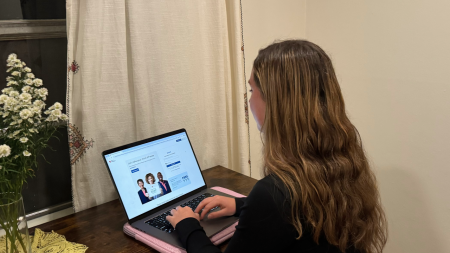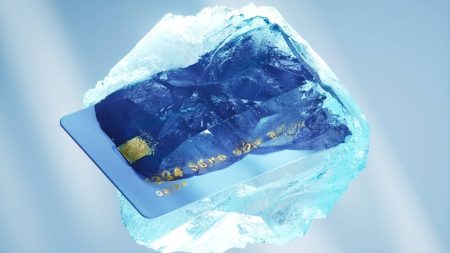Key takeaways
- Direct deposit allows you to receive your paychecks as automatic deposits to your bank account.
- The vast majority of Americans get paid by direct deposit.
- Many banks offer perks for receiving direct deposit, such as waived fees or even early paydays.
Direct deposit allows your employer to send your pay straight to your bank account, so you won’t need to deposit a paper check each payday. The prevalence of direct deposit has made paper paychecks largely a thing of the past, as 95 percent of respondents in a 2023 American Payroll Association survey indicated they were paid with direct deposit.
The main perk of direct deposit may be the convenience, but many banks provide additional benefits to customers who are paid this way that might help you save money and even get paid sooner.
What is direct deposit?
Direct deposit allows your employer to make deposits straight into your bank account instead of giving you a paper check to deposit yourself. This allows you to access your money more quickly and easily.
How direct deposit works
When you deposit a check into your account, your bank reaches out to the bank that issued the check to confirm the details of the transaction, including the amount of the check and whether the payer has enough funds in their account to cover it. This can take time, during which you might not yet have access to the money.
With direct deposit, your employer electronically sends your pay to your bank ahead of the upcoming payday, and your bank releases the funds to your account on the scheduled dates. As soon as your payday arrives, your pay shows up in your account and you can access it immediately.
Many employers let you split your direct deposit between multiple accounts, which allows you to set up an automatic savings plan. For example, you could tell your employer to deposit $50 of each paycheck into your savings account and the rest into your checking account. This helps you to increase the balance of your savings account without having to transfer funds manually.
You can also receive some other deposits via direct deposit. For example, you can often opt to get your tax refund via direct deposit or set up direct deposit for pension and Social Security payments.
How to set up direct deposit
Setting up direct deposit varies slightly from employer to employer, but your human resources or payroll department should be able to help you get started.
To set up direct deposit:
1. Obtain the direct deposit form from your employer. This form asks for personal details such as your name, address and Social Security number.
2. Enter the bank’s routing number and your checking account number. The routing number, which consists of nine digits, tells your employer which bank to send your money to. On a paper check, it appears in the bottom left corner and begins with a 0, 1, 2 or 3.
Your checking account number is used to identify your bank account. Like the routing number, your checking account number can be found at the bottom of your paper checks. It’s the second set of numbers that appears directly to the right of the routing number.
In addition to appearing on the bottom of your checks, both your routing number and checking account number can often be accessed in one’s online banking portal.
3. Provide a voided check, if requested. Some employers ask for a voided check in order to confirm your account information. As such, bringing your checkbook with you is a good idea if you’re setting up direct deposit in person.
To void a check, simply write “VOID” on it in large letters, or in smaller letters multiple times in the important fields, such as the payment amount box, the payment amount line, the payee line, the date line and the signature line. You can also write “VOID” on the back if you’d like.
How long does direct deposit take?
After you’ve submitted the direct deposit startup form: It may take one or two pay cycles for your direct deposit to start up, once you’ve submitted the form to your new employer for processing. If that’s the case, you’ll likely receive a paper check in the meantime.
Once your direct deposit is up and running: It often takes one to three business days for the funds to appear in your account each time you get paid, once the bank receives your payment from your employer. However, banks that offer early direct deposit make the funds available to you sooner, by up to two days.
Banks and challenger banks offering early direct deposit include Capital One, Chime, Current, Fifth Third Bank and Varo Bank. These banks choose to release the money as soon as the transaction clears rather than making you wait until payday.
Perks your bank provides for direct deposit
Banks may offer various perks to customers who set up direct deposit to their checking accounts.
One of the most common perks is a maintenance fee waiver. Some banks charge monthly fees on checking accounts, but they may waive the fee if you maintain a sufficient balance or receive a recurring direct deposit.
Some banks offer higher interest rates on checking or linked savings accounts if you meet certain requirements, which can include making a minimum number of debit card transactions or receiving direct deposits.
Early direct deposit is also a potential benefit. Banks offering an earlier payday release funds a day or two before your official payday so long as your employer has transmitted the money ahead of time.
Bottom line
Setting up direct deposit is typically easy, and it can save you the time of collecting a check every payday and depositing it in the bank. In addition to its being quick and convenient, direct deposit may come with perks from your bank such as early deposit, split deposit and waived monthly maintenance fees.
— Freelance writer TJ Porter wrote an earlier version of this story.
Read the full article here












